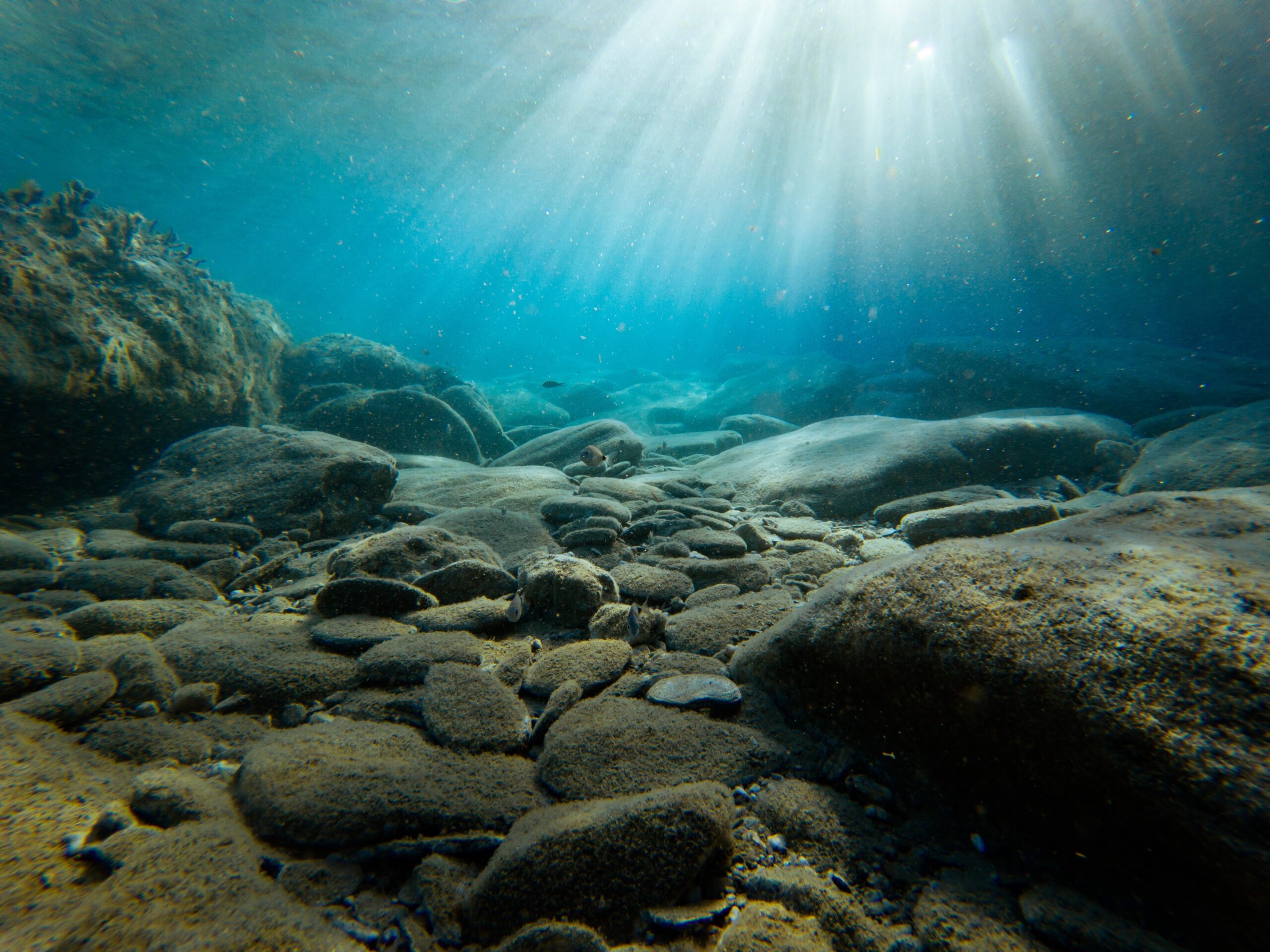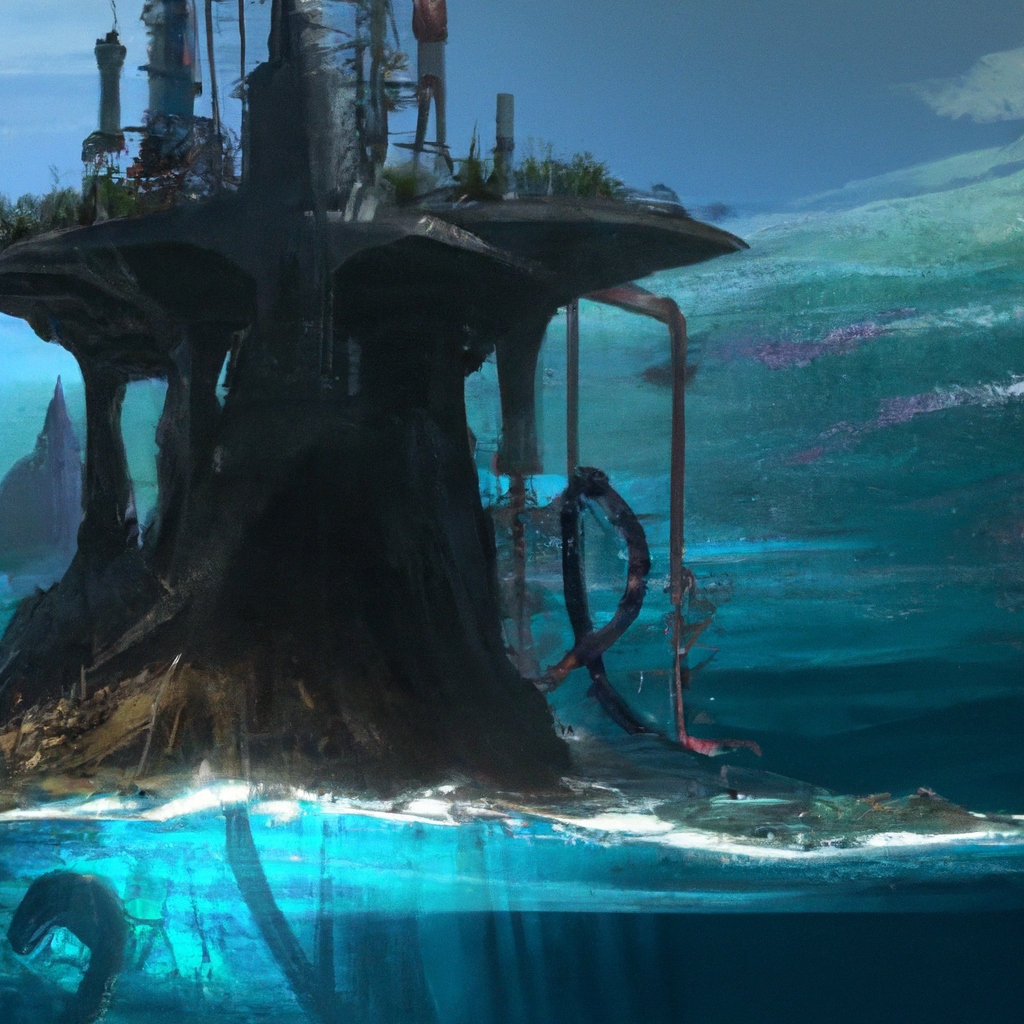Imagine a world where vast underwater cities and towering ocean skyscrapers exist, embracing the depths of the ocean as a new frontier for human habitation. As our planet’s population continues to grow and urban areas become more crowded, the concept of expanding our living spaces beneath the waves has captured the imagination of scientists, engineers, and architects alike. The future of ocean technology holds tremendous potential, with innovations that promise not only to transform our relationship with the sea but also to address pressing issues such as climate change and overpopulation. In this article, we will explore the exciting developments in ocean tech that are paving the way for these extraordinary possibilities.

The Concept of Underwater Cities
Defining underwater cities
Underwater cities are self-contained habitable structures built beneath the surface of the ocean. These cities aim to provide a sustainable and innovative solution to the growing issue of land scarcity and overpopulation. They offer a unique opportunity to explore the vast potential of Earth’s oceans and expand human civilization into uncharted territories. By utilizing cutting-edge technology and innovative construction methods, underwater cities have the potential to revolutionize the way we live and interact with the ocean environment.
Historical attempts at underwater habitation
The idea of underwater cities is not a new concept. Throughout history, there have been various attempts at underwater habitation. One notable example is the experimental underwater habitat called “Neptune” which was deployed off the coast of Florida in the 1960s. The habitat housed a team of aquanauts who lived and conducted research underwater for extended periods of time. While these early attempts were limited in scope and duration, they laid the groundwork for future advancements in underwater construction and inspired further exploration of the possibilities of aquatic living.
Inspirations from Science Fiction and Popular Culture
Science fiction and popular culture have played a significant role in popularizing the concept of underwater cities. Works such as Jules Verne’s “20,000 Leagues Under the Sea” and movies like “The Abyss” and “Aquaman” have captivated our imagination and sparked our curiosity about the underwater world. These fictional accounts have instilled a sense of wonder and intrigue, propelling scientists and innovators to strive for the realization of underwater cities. By drawing inspiration from these imaginative depictions, real-life advancements in technology and architecture are shaping the way we perceive underwater living.
Feasibility of Underwater Cities
Current technological capacities
Today, we have access to a wide range of technologies that make underwater cities a feasible endeavor. Advanced materials such as reinforced concrete and titanium alloys provide the necessary strength and durability to withstand the harsh underwater environment. Submersible robotics and remotely operated vehicles enable efficient construction and maintenance processes underwater. Moreover, advancements in life support systems and underwater communication technologies allow for prolonged human habitation below the surface.
Cost implications
Building underwater cities comes with significant cost implications. The unique requirements of constructing and maintaining such structures, including specialized materials, equipment, and expertise, contribute to the overall expenses. Additionally, the infrastructure necessary to support underwater cities, such as power supply, waste management systems, and transportation networks, requires substantial investment. However, with the potential for sustainable resource management and economic opportunities, the long-term benefits of underwater cities may outweigh the initial costs.
Structural and design challenges
Designing structures that can withstand the immense hydrostatic pressure and constant exposure to corrosive saltwater poses significant challenges. Specially engineered structures that distribute the pressure evenly and incorporate advanced buoyancy systems are essential for the success of underwater cities. Moreover, efficient drainage systems, flood control mechanisms, and modular designs that allow for expansion and adaptation are crucial considerations in designing these unique habitats.
Environmental impact and considerations
Developing underwater cities must be done with careful consideration of the surrounding marine ecosystems. The construction process, as well as the ongoing operation of the cities, can have an impact on the marine environment. Minimizing disturbance to marine life through responsible construction practices, implementing sustainable energy systems, and implementing measures to protect and restore marine ecosystems are all vital considerations to ensure the long-term viability and ecological sustainability of underwater cities.
Technological Innovations in Underwater Construction
Use of advanced materials in underwater construction
Advancements in materials science have made it possible to construct underwater cities using specialized materials that can withstand the unique challenges of the underwater environment. High-strength reinforced concrete, epoxy-coated steel, and corrosion-resistant alloys are just a few examples of the advanced materials utilized in underwater construction. These materials offer high strength-to-weight ratios, durability against saltwater corrosion, and resistance to hydrostatic pressure, ensuring the structural integrity of underwater habitats.
Innovations in structural design
Innovations in structural design play a crucial role in the construction of underwater cities. Engineers are developing novel approaches to ensure the stability and longevity of these habitats. For example, geodesic dome structures distribute the pressure evenly, reducing stress concentration points. Additionally, lightweight structural systems such as tension-supported membranes and inflatable structures are being explored to enhance flexibility and adaptability in underwater construction. These design innovations maximize strength while minimizing material usage and can facilitate the construction of large-scale underwater habitats.
Automation and robot-guided construction
Automation and robotics are revolutionizing the construction industry, and their application in underwater construction is no exception. Robotic systems equipped with advanced sensors and programmed with precise algorithms enable precise and efficient construction processes in challenging underwater environments. Remotely operated vehicles (ROVs) equipped with manipulator arms can perform tasks such as welding, drilling, and concrete spraying, eliminating the need for human divers in hazardous underwater construction sites. Automation and robot-guided construction not only improve safety and speed but also reduce costs associated with underwater construction projects.
Human Sustainability in Underwater Cities
Issues of oxygen supply and air quality
Ensuring a constant supply of oxygen and maintaining high air quality is crucial for the habitability of underwater cities. Advanced life support systems, including oxygen generators and carbon dioxide scrubbers, are essential components of these habitats. Moreover, implementing air circulation systems, air filtration technologies, and monitoring systems ensures a healthy living environment for the inhabitants. By utilizing innovative technologies and continuous monitoring, underwater cities can mitigate the challenges of oxygen supply and air quality control.
Structural safety against oceanic pressures for human habitat
One of the primary concerns of underwater living is the immense pressure exerted by the ocean depths. Designing habitats that can withstand these pressures and provide a safe living environment for humans is of paramount importance. By utilizing strong materials and innovative structural designs, underwater habitats can be constructed to withstand hydrostatic pressure. Additionally, the implementation of redundancy systems, regular maintenance inspections, and emergency procedures ensure the safety of inhabitants in case of structural breaches or failures.
Psychological impacts of underwater habitation
Living underwater presents unique psychological challenges for inhabitants. The absence of natural light, limited social interactions, and the isolation from the world above can have psychological effects on individuals. However, designers of underwater cities can address these challenges by incorporating elements like artificial lighting simulating natural daylight, communal areas for social interactions, and advanced communication technologies to facilitate connections with the outside world. Creating a sense of community and implementing recreational activities can also contribute to the mental well-being of underwater city residents.

Energy and Resource Management
Harnessing oceanic energy sources
One significant advantage of underwater cities is the vast potential for harnessing oceanic energy sources. The ocean offers various renewable energy options, such as tidal, wave, and thermal energy. By utilizing underwater turbines, wave converters, and heat exchangers, underwater habitats can generate clean and sustainable energy. These energy sources can power the cities’ infrastructure, including lighting, ventilation systems, and technological equipment, reducing reliance on external power sources and promoting self-sufficiency.
Accessing and managing resources in the ocean
The ocean is a rich source of resources that can be harnessed to support the needs of underwater cities. Seawater can be desalinated to provide a sustainable source of freshwater for drinking, sanitation, and agricultural purposes. Additionally, underwater mining and aquaculture can provide raw materials and food for the inhabitants. With careful planning and sustainable practices, underwater cities can effectively manage and utilize oceanic resources, reducing their reliance on external sources and minimizing their ecological footprint.
Waste management and recycling in underwater habitats
In a self-contained environment like an underwater city, effective waste management and recycling systems are crucial for maintaining a sustainable and clean living environment. Innovative waste management technologies, including compacting and sorting systems, can minimize the storage space needed for waste. Furthermore, implementing recycling programs and utilizing composting techniques can reduce the amount of waste generated. Developing closed-loop systems that recycle water, nutrients, and materials can significantly contribute to the sustainability and environmental stewardship of underwater habitats.
The Idea of Ocean Skyscrapers
What are ocean skyscrapers
Ocean skyscrapers, also known as underwater skyscrapers or seascrapers, are vertical structures that extend from the ocean surface to great depths. These architectural marvels are designed to provide additional living, working, and recreational spaces within the underwater environment. Similar to their land-based counterparts, ocean skyscrapers aim to maximize limited space and offer a unique perspective on underwater living. These structures provide opportunities for vertical urban planning and offer breathtaking views of the oceanic surroundings.
Prospects and potential limitations
The concept of ocean skyscrapers opens up new possibilities for expanding underwater civilization. These structures have the potential to house larger populations, accommodate commercial and recreational activities, and provide new platforms for scientific research. However, there are several challenges and limitations associated with ocean skyscrapers, including the increased complexity of construction, the need for advanced structural systems, and the potential impact on marine ecosystems. Nonetheless, with advancements in technology and careful planning, ocean skyscrapers hold great promise for the future of underwater living.
Potential uses for ocean skyscrapers
Ocean skyscrapers offer a wide range of potential uses and applications. These structures can serve as residential complexes, commercial hubs, research facilities, and tourist attractions. By providing diverse and functional spaces, ocean skyscrapers can support various industries, including aquaculture, tourism, and underwater exploration. Additionally, these structures can contribute to the preservation and conservation of marine ecosystems by offering platforms for scientific research and environmental monitoring. The possibilities are endless, and ocean skyscrapers have the potential to revolutionize underwater living.

Technological Advances in Building Ocean Skyscrapers
Innovations in design and construction
Building ocean skyscrapers requires innovative approaches to design and construction. Architects and engineers are exploring the use of modular construction techniques, prefabricated components, and lightweight materials to enhance efficiency and achieve rapid construction. Advanced design software, such as parametric modeling and 3D printing, enables intricate and customized designs. Additionally, advancements in buoyancy control systems, intelligent sensor networks, and adaptive structures ensure the stability and safety of ocean skyscrapers.
Addressing the challenges of building in the ocean
Building in the ocean presents unique challenges that must be overcome to ensure the success of ocean skyscrapers. The corrosive nature of saltwater, extreme weather conditions, and the dynamic forces exerted by waves and currents all pose significant challenges. Architects and engineers are developing specialized coatings and protective materials to mitigate corrosion. Additionally, incorporating wave energy dissipation systems, flexible joints, and advanced anchoring methods enhances the structural integrity of ocean skyscrapers. By addressing these challenges with technological advancements, the construction of ocean skyscrapers can become a reality.
Safety measures and disaster management
Safety is of utmost importance in underwater structures, and ocean skyscrapers are no exception. Implementing robust disaster management strategies, including emergency evacuation procedures, escape pods, and redundancy systems, ensure the safety of occupants in the event of emergencies such as flooding, earthquakes, or structural failures. Additionally, integrating advanced monitoring and early warning systems enables real-time detection of any potential risks or anomalies, facilitating timely responses and preventing catastrophic events. By prioritizing safety measures, ocean skyscrapers can provide a secure and reliable living environment.
Oceanic Farming in Underwater Cities and Skyscrapers
Concept of vertical underwater farming
Vertical underwater farming is an innovative solution for sustainable food production in underwater habitats. Utilizing the principles of hydroponics and aquaponics, crops can be grown without soil and with minimal water usage. Plant beds are vertically stacked, maximizing space utilization and optimizing sunlight exposure. Nutrient-rich wastewater from aquaculture systems, where fish or other aquatic species are grown, can be recycled and used to fertilize the plants. This integrated farming system provides a consistent food supply for underwater inhabitants while minimizing the ecological impact.
Advanced aquaponic systems
Aquaponic systems play a vital role in creating a self-sustaining ecosystem within underwater cities and skyscrapers. In these systems, fish waste provides essential nutrients for plant growth, while the plants act as natural filters, purifying the water for the fish. By carefully managing the balance between fish and plant populations, underwater farmers can create a symbiotic relationship that promotes the efficient use of resources. Additionally, monitoring systems and automation technologies enable optimal nutrient and pH control, ensuring the health and productivity of the aquaponic systems.
Sustainability and food security in underwater habitats
Oceanic farming offers a sustainable solution to food security in underwater habitats. By utilizing aquaponics, vertical farming, and efficient resource management, underwater cities and skyscrapers can achieve a secure and reliable food supply. The ability to grow fresh produce and cultivate fish and seafood locally reduces dependence on external food sources and minimizes transportation costs and carbon footprint. Furthermore, by implementing sustainable fishing and aquaculture practices, underwater habitats can contribute to the conservation of marine biodiversity and ensure long-term food security for their inhabitants.

Investments in Underwater Cities and Ocean Skyscrapers
Current investments in such projects
The concept of underwater cities and ocean skyscrapers has attracted the attention and investment of various private and public entities. Several projects and initiatives have already commenced, focusing on the research, development, and construction of underwater habitats. Prominent private companies, philanthropic organizations, and government agencies have allocated significant resources to these ventures. These investments not only drive technological development and innovation but also pave the way for future advancements in underwater construction and sustainable living.
Potential investors and stakeholders
Investments in underwater cities and ocean skyscrapers span across a wide range of industries and sectors. Real estate developers, construction companies, and architecture firms are actively involved in designing and building these structures. Technology companies contribute to the development of advanced materials, automation systems, and life support technologies. Government agencies and research institutions play an important role in funding and supporting scientific research and environmental impact studies. Additionally, impact investors and philanthropic organizations recognize the potential of underwater habitats as a means to address global challenges such as overpopulation, land scarcity, and climate change.
Economic feasibility and future market projections
The economic feasibility of underwater cities and ocean skyscrapers hinges on various factors, including construction costs, operational expenses, and revenue-generating opportunities. While initial investments may be significant, the potential for sustainable resource management, renewable energy production, and economic activities within these habitats hold promise. Revenue streams from tourism, research partnerships, aquaculture, and real estate development can contribute to the economic viability of underwater cities and create a self-sustaining ecosystem. Furthermore, advancements in underwater technology and increasing awareness of the need for alternative living options could drive future market demand for underwater habitats.
Legal and Political Aspects of Underwater Habitats
Legal ownership of oceans
The legal ownership and governance of oceans pose complex challenges for the establishment and regulation of underwater habitats. Currently, the United Nations Convention on the Law of the Sea (UNCLOS) governs the use and exploitation of marine resources beyond national jurisdictions. However, the development of underwater cities and ocean skyscrapers may require the establishment of new legal frameworks and international agreements to address the unique circumstances and potential conflicts that arise from living and operating in these environments. Clarifying ownership rights, resource exploitation regulations, and jurisdictional boundaries are essential aspects of the legal and political landscape surrounding underwater habitats.
Protecting rights of underwater inhabitants
Ensuring the protection of the rights of underwater inhabitants, including the right to privacy, safety, and access to resources, is a crucial consideration in the legal and political aspects of underwater habitats. International standards and regulations must be developed to safeguard the well-being and rights of individuals living in these novel environments. Balancing the interests of the underwater inhabitants, the environment, and external stakeholders requires careful and inclusive decision-making processes that take into account the diverse perspectives and potential conflicts that may arise.
Maintaining international peace and security in the oceans
The establishment of underwater cities and ocean skyscrapers brings forth the need for maintaining international peace and security in these regions. Collaboration among nations, international organizations, and relevant stakeholders is essential to addressing potential disputes, ensuring the safety and security of underwater habitats, and preventing conflicts. Discussions and mechanisms for dispute resolution, security protocols, and monitoring systems must be established to promote peaceful coexistence in the underwater realms. Collaboration and cooperation can pave the way for a harmonious future where underwater habitats contribute to the well-being of humanity while preserving the integrity of the global ocean ecosystem.











